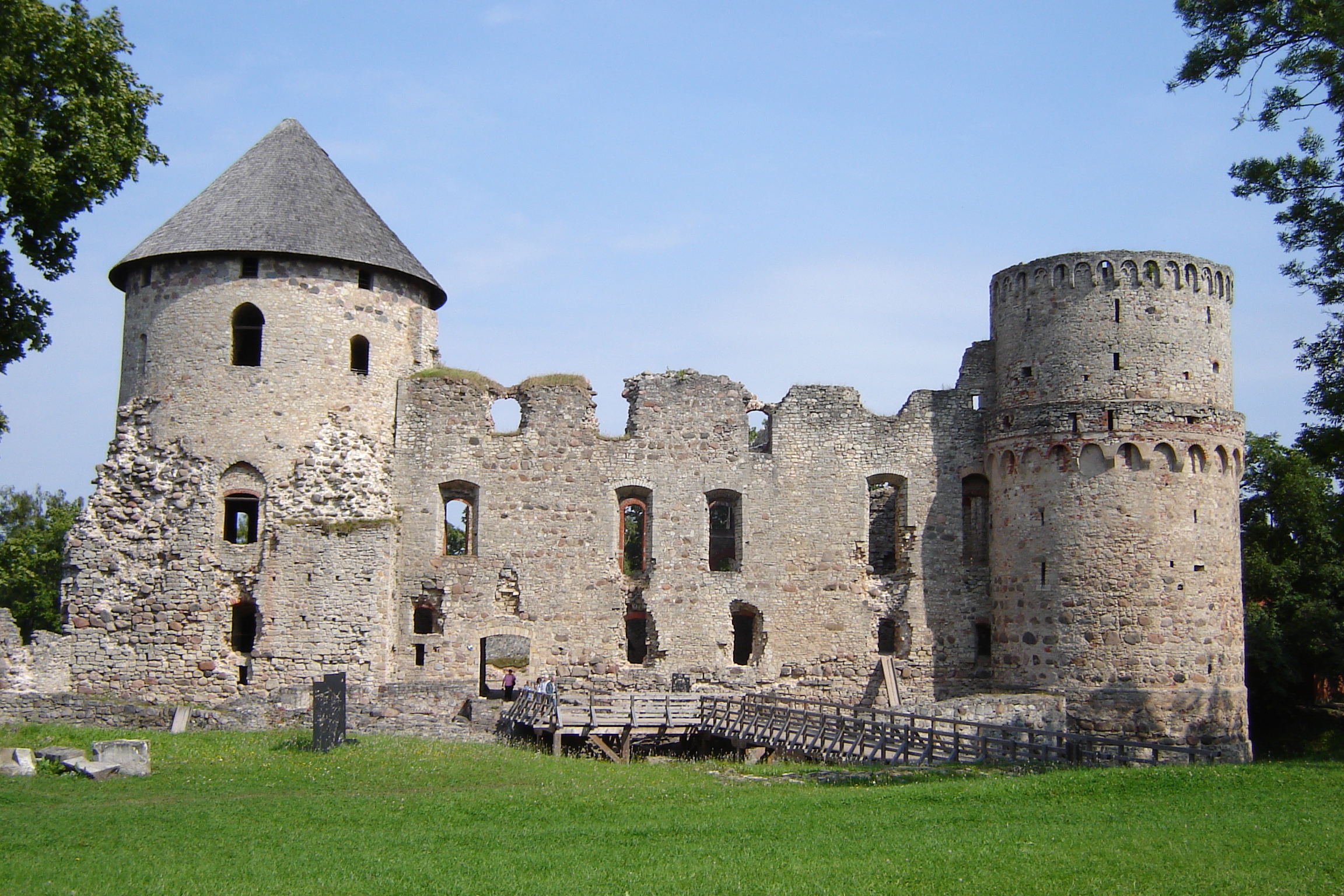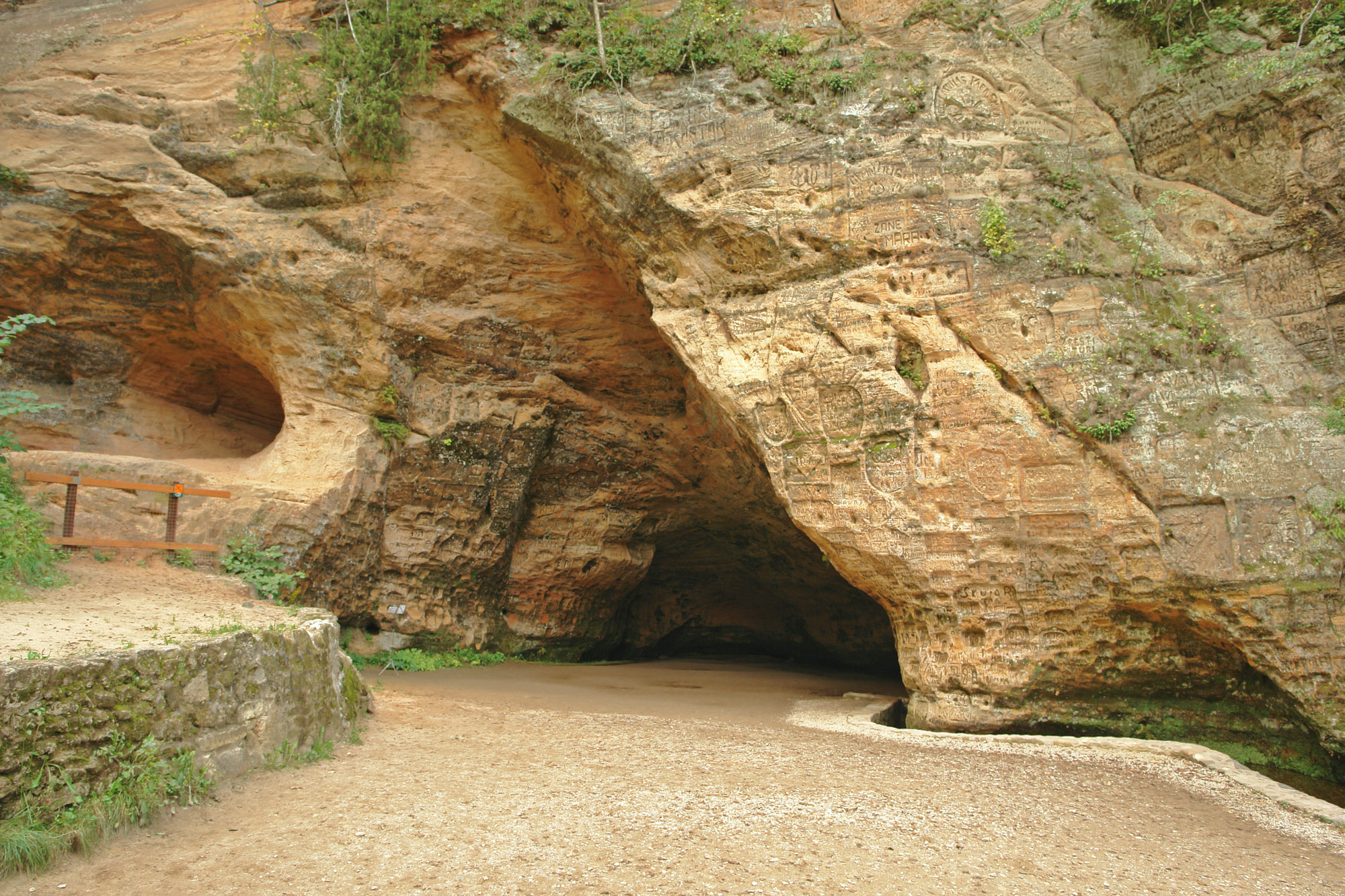|
Gauja National Park
__NOTOC__ Gauja National Park ( lv, Gaujas nacionālais parks) in Vidzeme is the largest national park in Latvia, with an area of 917.86 km2 running from north-east of Sigulda to south-west of Cēsis along the valley of the Gauja River, from which the park takes its name. It was established in order to protect slightly disturbed natural areas, promote nature tourism and ensure sustainable development in the area. National park is characterized by a high biological diversity, rock outcrops and varied terrain shapes, springs, picturesque landscapes and many historical and cultural monuments from different centuries. The major part of the national park and the dominant is the old valley of the Gauja River. The valley is protected and at the same time it can be used for nature and cultural history tourism, as well as healthy recreation. The park administration is based in Sigulda. Area The area of the park is 91.745 ha and it is divided into five functional zones. Nature re ... [...More Info...] [...Related Items...] OR: [Wikipedia] [Google] [Baidu] |
Latvia
Latvia ( or ; lv, Latvija ; ltg, Latveja; liv, Leţmō), officially the Republic of Latvia ( lv, Latvijas Republika, links=no, ltg, Latvejas Republika, links=no, liv, Leţmō Vabāmō, links=no), is a country in the Baltic region of Northern Europe. It is one of the Baltic states; and is bordered by Estonia to the north, Lithuania to the south, Russia to the east, Belarus to the southeast, and shares a maritime border with Sweden to the west. Latvia covers an area of , with a population of 1.9 million. The country has a temperate seasonal climate. Its capital and largest city is Riga. Latvians belong to the ethno-linguistic group of the Balts; and speak Latvian, one of the only two surviving Baltic languages. Russians are the most prominent minority in the country, at almost a quarter of the population. After centuries of Teutonic, Swedish, Polish-Lithuanian and Russian rule, which was mainly executed by the local Baltic German aristocracy, the independent R ... [...More Info...] [...Related Items...] OR: [Wikipedia] [Google] [Baidu] |
Cēsis
Cēsis (), (german: Wenden, liv, Venden, et, Võnnu, pl, Kieś) is a town in Latvia located in the northern part of the Vidzeme Upland, Central Vidzeme Upland. Cēsis is on the Gauja, Gauja River valley, and is built on a series of ridges above the river overlooking the woods below. Cēsis was one of the candidate cities for the title of European Capital of Culture, European Capital of Culture 2014 (Riga was the Latvian city that won the title). Castle The oldest settlement in Cēsis is the hillfort on List of hillforts in Latvia, Riekstu hill, a fortified wooden castle built by a tribe known as the Vends. The mound with its partly preserved fortification system can still be seen in the Castle Park. This settlement was located near major trade routes from west to east and dominated the regional countryside. German crusaders known as the Livonian Brothers of the Sword began construction of a castle ''Wenden'' near the hill fort in 1209. When the castle was enlarged and f ... [...More Info...] [...Related Items...] OR: [Wikipedia] [Google] [Baidu] |
Vidzeme
Vidzeme (; Old Latvian orthography: ''Widda-semme'', liv, Vidūmō) is one of the Historical Latvian Lands. The capital of Latvia, Riga, is situated in the southwestern part of the region. Literally meaning "the Middle Land", it is situated in north-central Latvia north of the Daugava River. Sometimes in German, it was also known as ''Livland'', the German form from Latin ''Livonia'', though it comprises only a small part of Medieval Livonia and about half (the Latvian part) of Swedish Livonia. Most of the region's inhabitants are Latvians (85%), thus Vidzeme is the most ethnically Latvian region in the country. The historic Governorate of Livonia is also larger than Vidzeme, since it corresponds roughly to Swedish Livonia. History In ancient times, the territory of Vidzeme was inhabited by Latgalians and Livs (near the coast of the Gulf of Riga and along the lower reaches of the Daugava and Gauja rivers). Until the German conquest in the 13th century the Daugava, which now ... [...More Info...] [...Related Items...] OR: [Wikipedia] [Google] [Baidu] |
Sigulda
Sigulda (; german: Segewold, pl, Zygwold, russian: Сигулда) is a town in the Vidzeme region of Latvia, from the capital city Riga. Overview Sigulda is on a picturesque stretch of the primeval Gauja river valley. Because of the reddish Devonian sandstone which forms steep rocks and caves on both banks of the river, Sigulda has been called the "Switzerland of Vidzeme". After the restoration of Latvian independence in 1991, an emphasis was placed on conserving Sigulda's public monuments and parks as well as improving the town's tourist sector. Supported by the town council, a traditional Opera Festival takes place in an open-air music hall in the castle ruins each summer. A Town Festival is celebrated in May when cherry trees blossom, while Sigulda is known for the colors of its trees in autumn. Sports such as skiing, bobsledding, and the luge are popular in wintertime and bungee jumping is practiced during the rest of the year. The Gutmanis Cave lies halfway between Siguld ... [...More Info...] [...Related Items...] OR: [Wikipedia] [Google] [Baidu] |
Gauja
The Gauja River ( et, Koiva jõgi, german: Livländische Aa) is a river in the Vidzeme region of Latvia. It is the only large river of Latvia that begins and ends its flow in Latvia. Its length is 460 km, of which 93.5 km (approximately one-fifth) are in the Gauja National Park. In this part, the Gauja River flows through the Gauja valley, which is 1 to 2.5 km wide, and the maximum depth near Sigulda is 85 m. Thus, Gauja is the longest river of Latvia when we count only the parts of the river in the country's territory. Daugava has only 367 km in Latvia, while the whole river is over 1000 km. The sandstone rocks on the banks of the Gauja and its adjoining rivers started forming 370 to 300 million years ago during the Devonian period. History Before the 13th century, the Gauja River used to serve as a trade route and border river between the Livonian and Latgalian lands. In some territories, they used to live mixed together. When Livonian languages ... [...More Info...] [...Related Items...] OR: [Wikipedia] [Google] [Baidu] |
Natura 2000
Natura 2000 is a network of nature protection areas in the territory of the European Union. It is made up of Special Areas of Conservation and Special Protection Areas designated under the Habitats Directive and the Birds Directive, respectively. The network includes both terrestrial and Marine Protected Areas. History In May 1992, the governments of the European Communities adopted legislation designed to protect the most seriously threatened habitats and species across Europe. The Habitats Directive complements the Birds Directive adopted earlier in 1979 and together they make up the Natura 2000 network of protected areas. The Birds Directive requires the establishment of Special Protection Areas for birds. The Habitats Directive similarly requires Sites of Community Importance which upon the agreement of the European Commission become Special Areas of Conservation to be designated for species other than birds, and for habitat types (e.g. particular types of forest, grassland ... [...More Info...] [...Related Items...] OR: [Wikipedia] [Google] [Baidu] |
Windmill
A windmill is a structure that converts wind power into rotational energy using vanes called windmill sail, sails or blades, specifically to mill (grinding), mill grain (gristmills), but the term is also extended to windpumps, wind turbines, and other applications, in some parts of the English speaking world. The term wind engine is sometimes used to describe such devices. Windmills were used throughout the High Middle Ages, high medieval and early modern periods; the horizontal or panemone windmill first appeared in Persia during the 9th century, and the vertical windmill first appeared in northwestern Europe in the 12th century. Regarded as an icon of Culture of the Netherlands, Dutch culture, there are approximately 1,000 windmills in the Netherlands today. Forerunners Wind-powered machines may have been known earlier, but there is no clear evidence of windmills before the 9th century. Hero of Alexandria (Heron) in first-century Roman Egypt described what appears to be a ... [...More Info...] [...Related Items...] OR: [Wikipedia] [Google] [Baidu] |
List Of National Parks In The Baltics
This is a list of the national parks in the Baltic states of Estonia, Latvia, and Lithuania. Estonia There are 6 national parks in Estonia. Latvia There are 4 national parks in Latvia. Lithuania There are 5 national parks in Lithuania. ''Protected Planet'' They were established in 1991 after Lithuania declared independence from the Soviet Union in 1990. Lithuanian SSR National Park established in 1974 was reorganized and renamed Aukštaitija National Park. Now they cover about 2.3 percent of Lithuania's territory. See also * Geography of Estonia * Geography of Latvia * Geography of Lithuania * Protected areas of Estonia * List of protected areas of Latvia * List of protected areas of LithuaniaReferences {{DEFAULTSORT:National parks in the Baltics Lists of national parks, ...[...More Info...] [...Related Items...] OR: [Wikipedia] [Google] [Baidu] |
The Park Of Vienkoci
''The'' () is a grammatical article in English, denoting persons or things already mentioned, under discussion, implied or otherwise presumed familiar to listeners, readers, or speakers. It is the definite article in English. ''The'' is the most frequently used word in the English language; studies and analyses of texts have found it to account for seven percent of all printed English-language words. It is derived from gendered articles in Old English which combined in Middle English and now has a single form used with pronouns of any gender. The word can be used with both singular and plural nouns, and with a noun that starts with any letter. This is different from many other languages, which have different forms of the definite article for different genders or numbers. Pronunciation In most dialects, "the" is pronounced as (with the voiced dental fricative followed by a schwa) when followed by a consonant sound, and as (homophone of pronoun ''thee'') when followed by a ... [...More Info...] [...Related Items...] OR: [Wikipedia] [Google] [Baidu] |
Gauja Formation
The Gauja Formation is a Middle Devonian fossil locality in Estonia and Latvia. It is named after the Gauja River, where it is exposed along the banks. Description The Gauja Formation has a maximum thickness of . It is composed of weakly to moderately cemented layers of fine-grained to very fine-grained sandstone. The layer is predominantly light to yellowish-gray in color, but can be pinkish brown or variegated. It is mostly composed of quartzose arenites. It is overlain by the thick Amata Formation and the Plavinas Formation. The Gauja Formation contains two cyclic members. The lower layers are known as the Sietin Member and are composed mostly of sandstone with a thin layer of siltstone at the top. It has yielded numerous fossils of fishes. Among them are '' Asterolepis'', ''Bothriolepis'', '' Glyptolepis baltica'', '' Laccognathus panderi'', '' Livoniana multidentata'',Ahlberg et al., 2000 and '' Megadonichthys kurikae''. The upper layers are thicker, and the lower par ... [...More Info...] [...Related Items...] OR: [Wikipedia] [Google] [Baidu] |






.png)